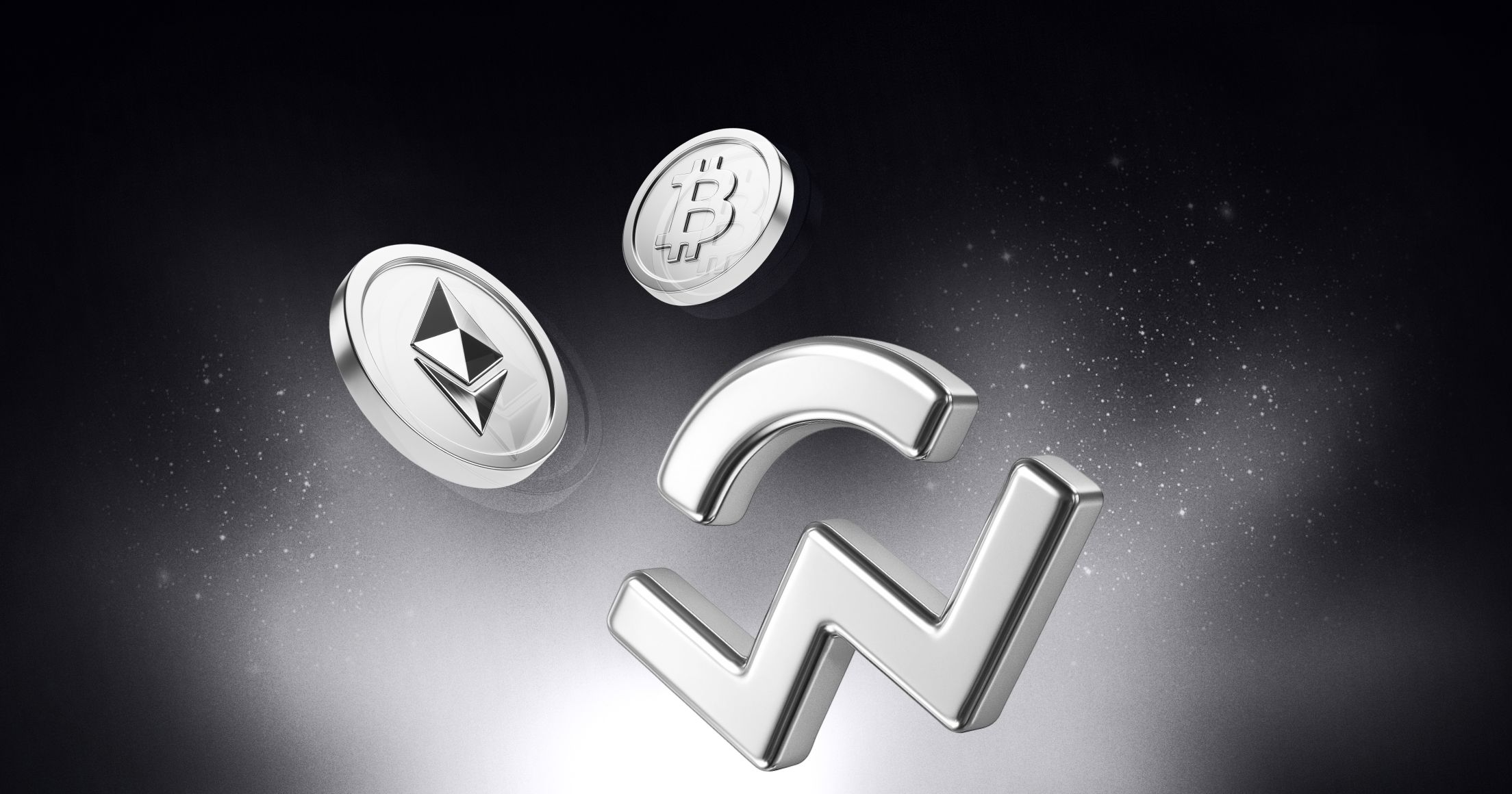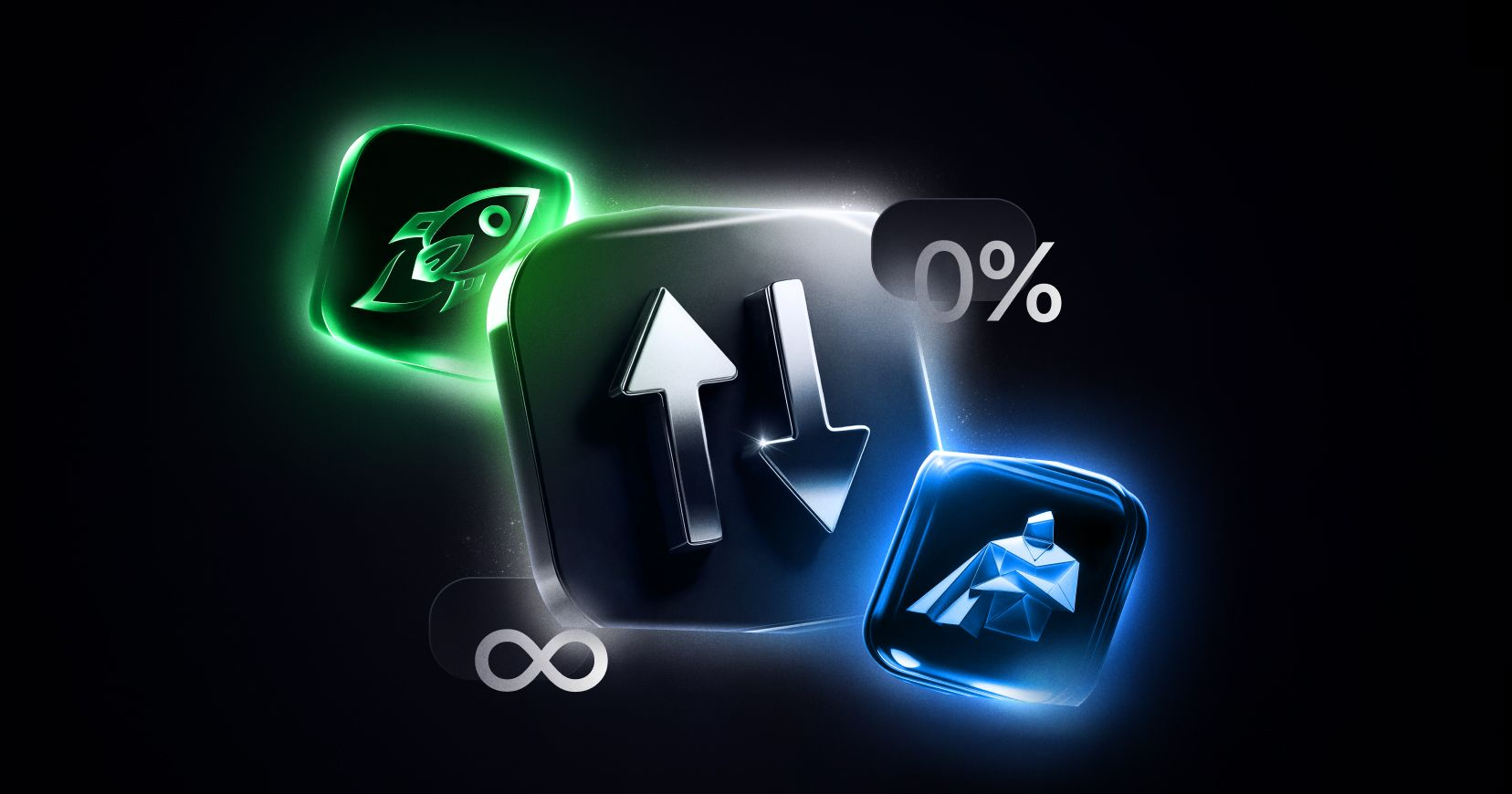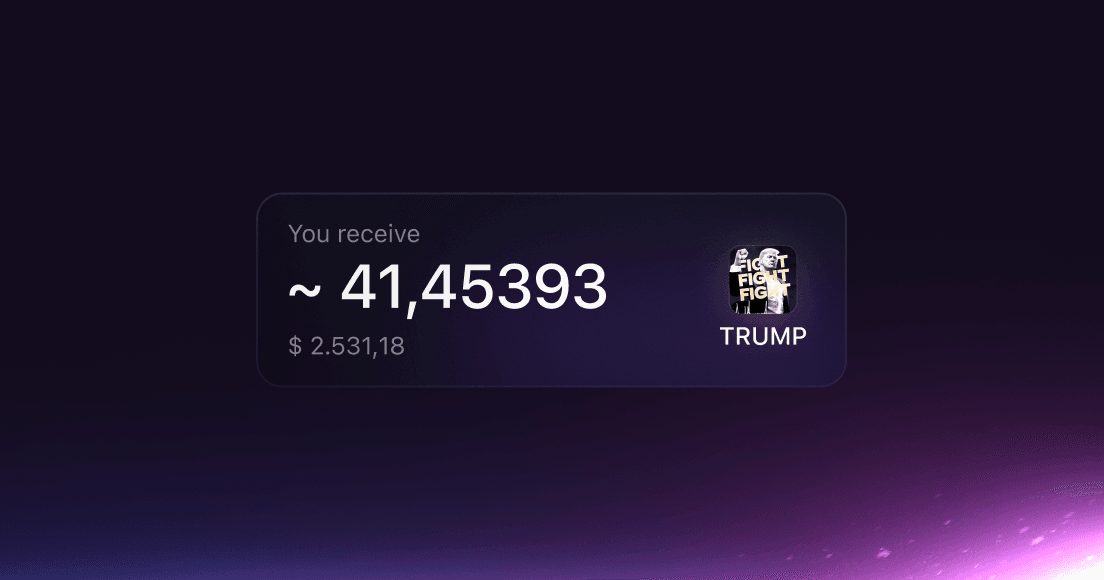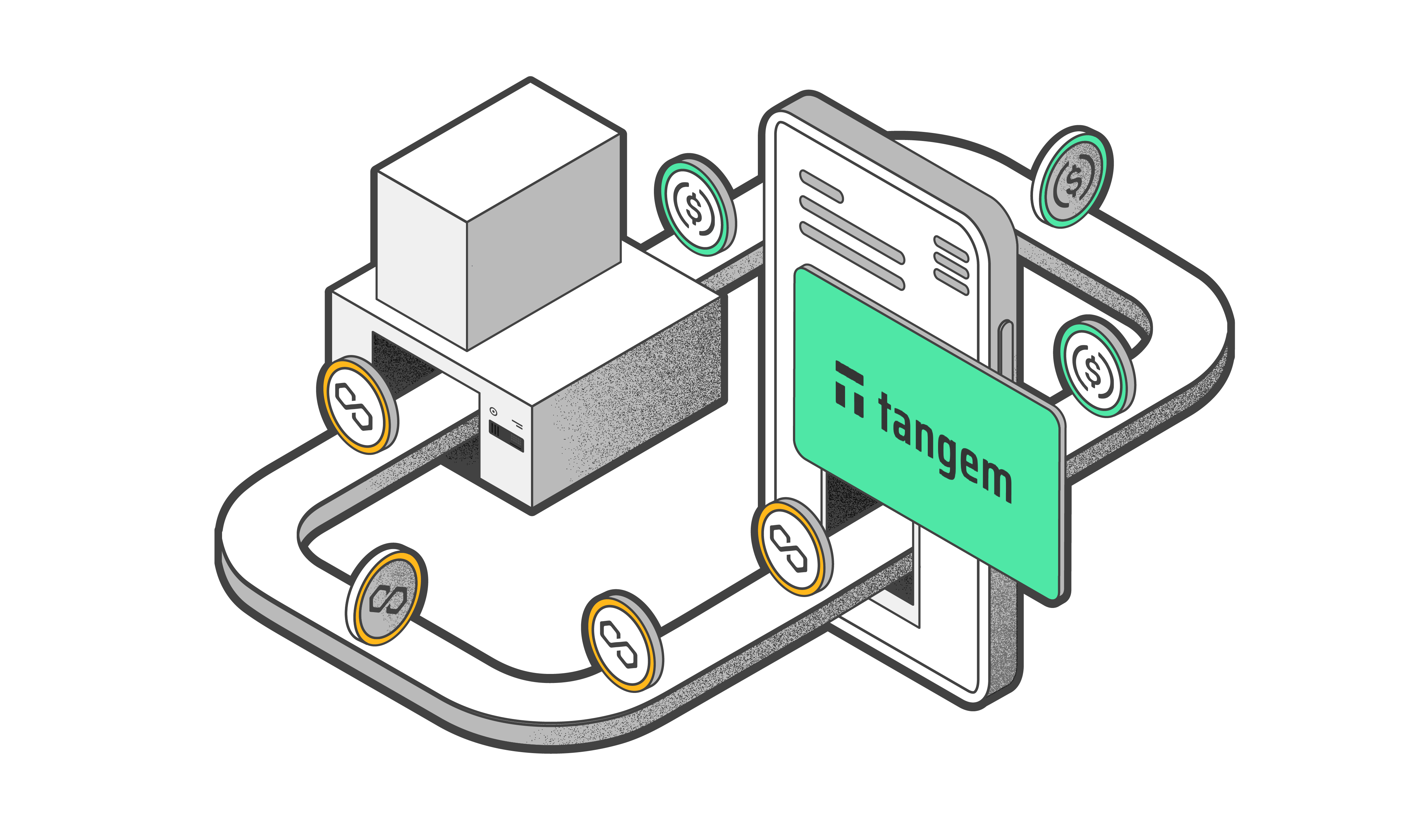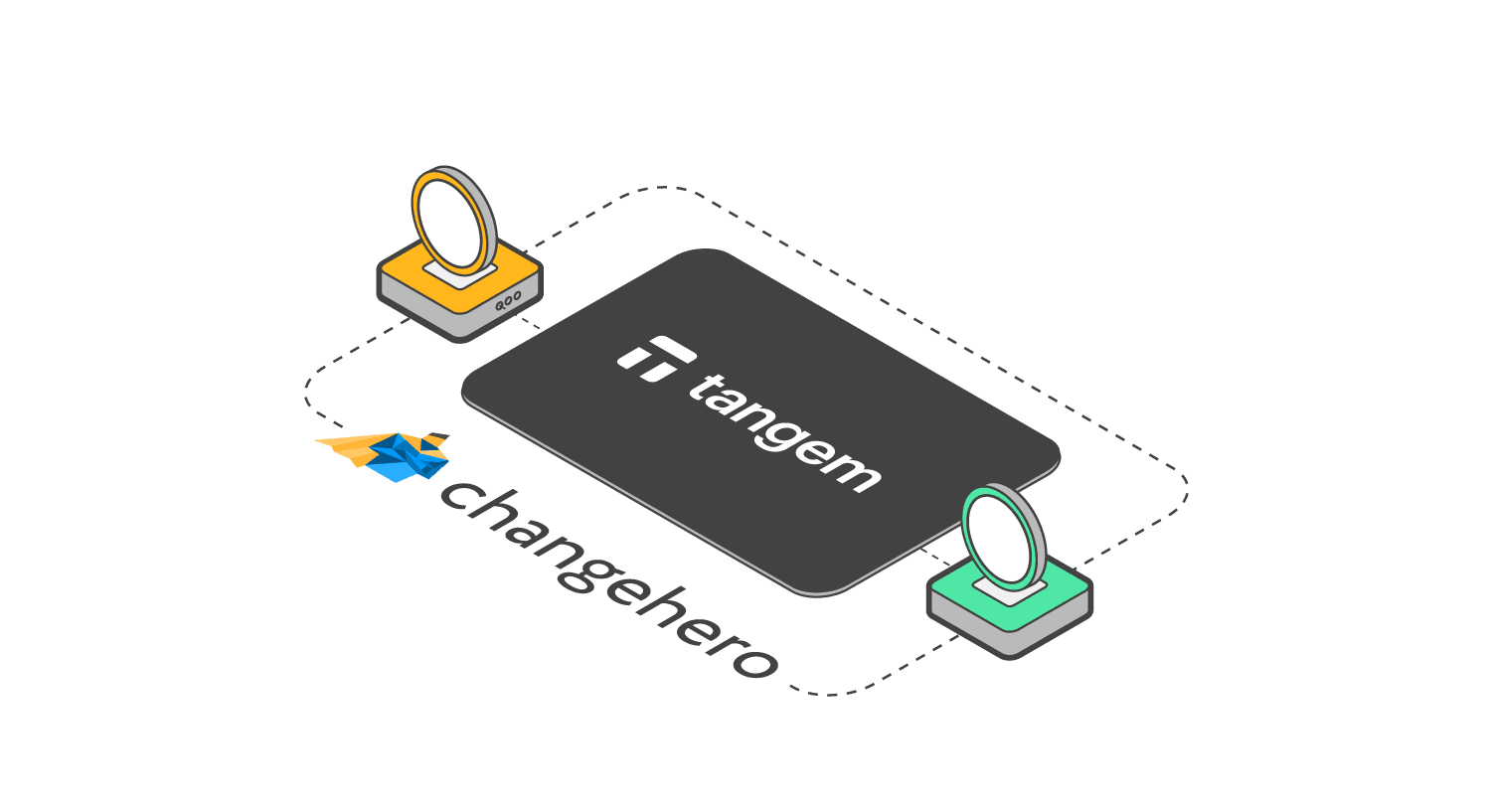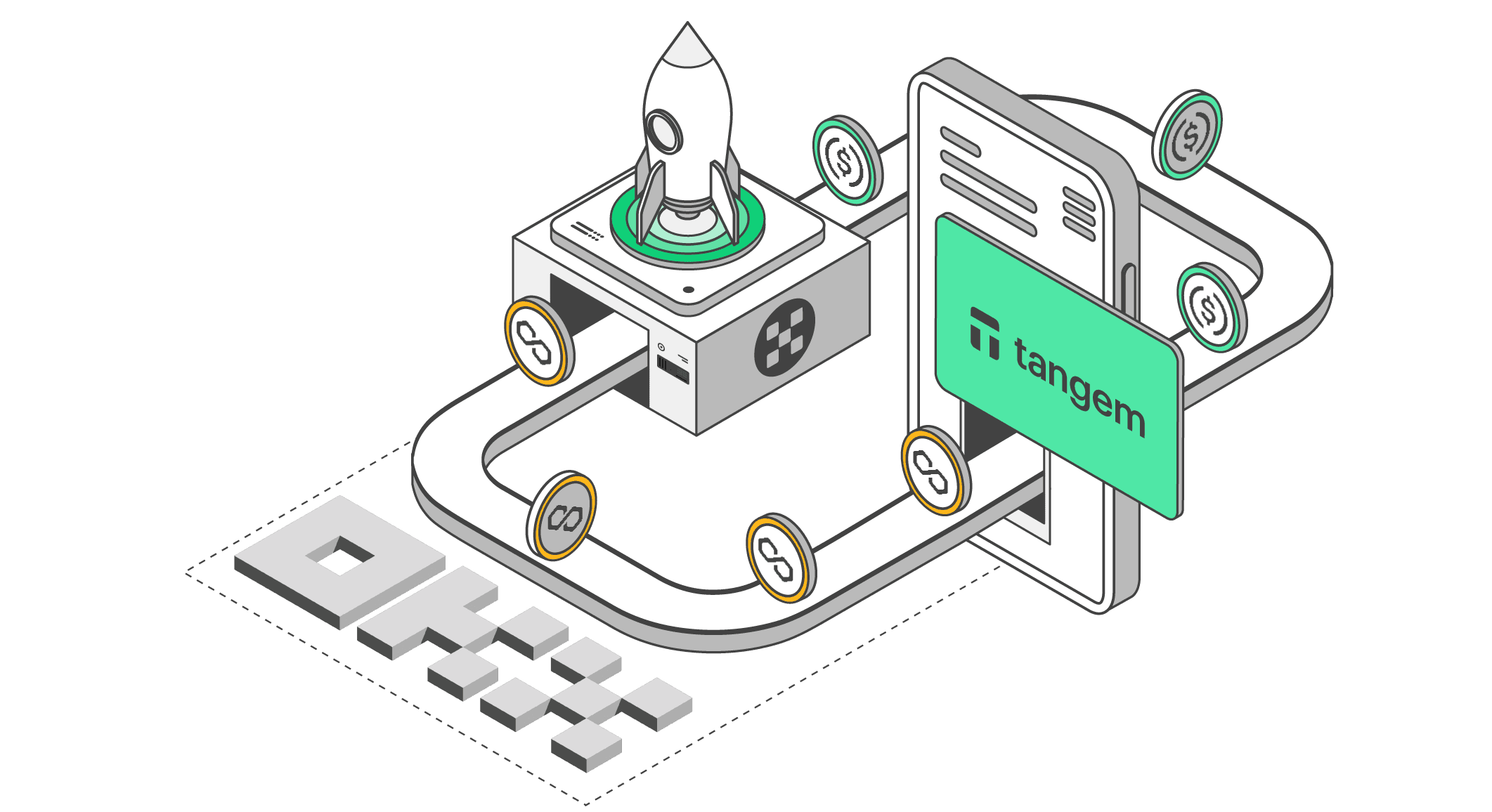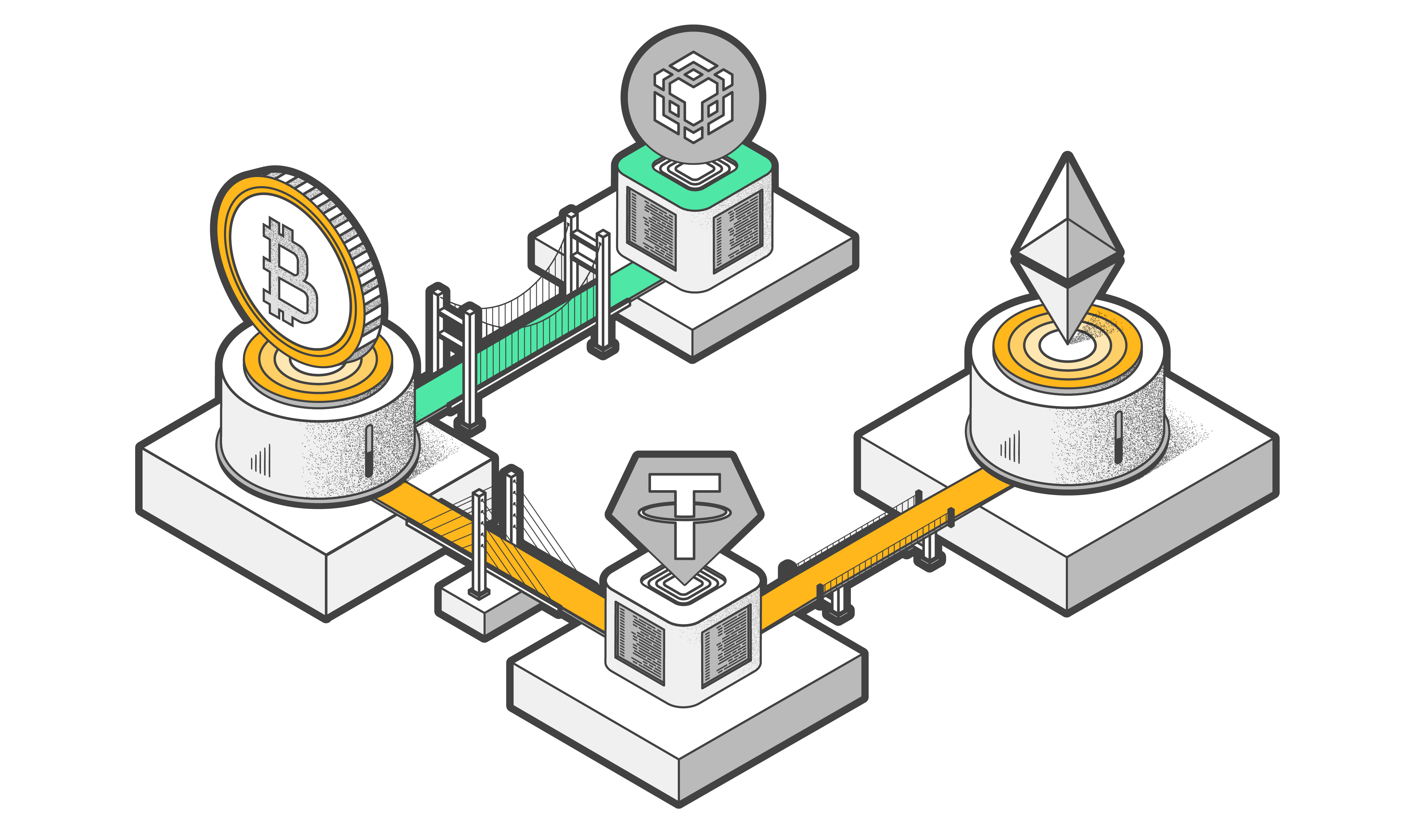
What Is Tron (TRX): Complete 2025 Guide for Beginners

AI summary
TRON is a blockchain platform launched in 2017 that focuses on providing a fast, low-cost network for digital content and decentralized applications, using a Delegated Proof-of-Stake system and its own efficient smart contract engine. With features like low transaction fees, high throughput, and a creator-focused ecosystem, TRON has grown rapidly—especially after acquiring BitTorrent—and now supports a wide range of applications, from payments to gaming and stablecoin transfers. Its governance is community-driven through the TRON DAO, and its native token, TRX, powers transactions, staking, and network governance.
Instead of reinventing blockchain mechanics, TRON focused on refining what already worked, including smart contracts, decentralized applications, and delegated proof-of-stake (DPoS). This practical approach helped TRON grow quickly, especially after acquiring the BitTorrent file-sharing platform in 2018. Today, TRON aims to support a decentralized version of the internet and provide an efficient environment for creators, developers, and everyday users. Below is a comprehensive breakdown of how TRON works, what sets it apart, and why many consider it a strong player in the Web3 ecosystem.
How the TRON Network Works
TRON relies on its own smart-contract engine, called the TRON Virtual Machine (TVM). Developers built it for efficiency, low resource consumption, and compatibility with Ethereum’s ERC-20 structure through its TRC-20 token standard. This makes it easy for developers to port or build new decentralized applications.
The network uses three layers:
- Core Layer: Handles consensus, account operations, and smart contract execution. TRON utilizes the Delegated Proof-of-Stake (DPoS) system, where TRX holders vote for network delegates who help run the chain.
- Storage Layer: Manages blockchain data using a combination of block storage, state storage, and a graph database approach designed for high-volume, real-world data needs.
- Application Layer: Supports dApps, wallets, and tools built on TRON, all powered by smart contracts that run on the TVM.
TRON Virtual Machine (TVM)
The TVM is lightweight and optimized for speed. Smart contracts are written in Solidity and run on a stack-based virtual machine that prioritizes low-cost execution. TRON’s distributed storage protocol splits data into block and state storage, helping the network scale while keeping resource use predictable. Developers can build games, wallets, and DeFi tools on TRON with significantly lower fees compared to many competing networks.
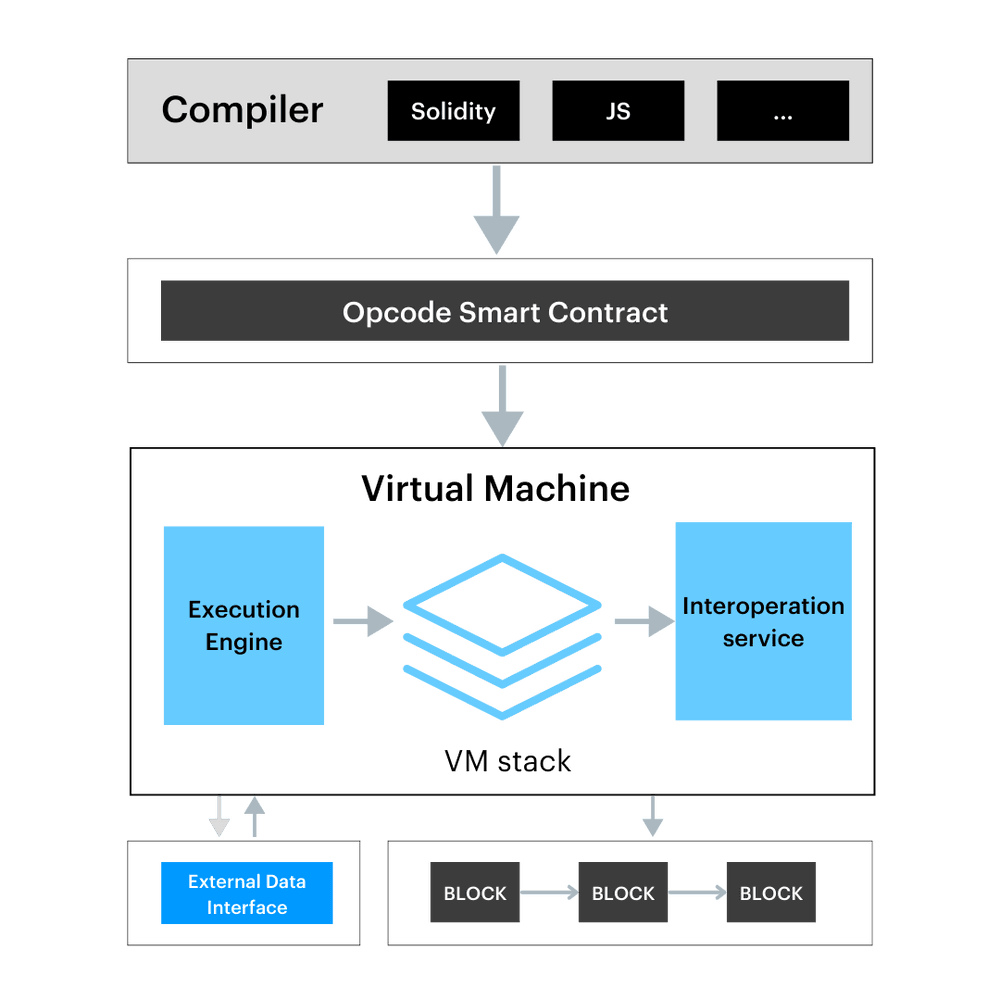
Governance and Super Representatives
TRON’s governance system uses 27 elected Super Representatives (SRs). These members:
- Validate transactions
- Produce blocks
- Propose parameter changes, such as fee updates or block rewards
A proposal becomes valid when at least 18 SRs approve it. Governance decisions take effect in the next maintenance period.
How Super Representatives' rewards work
- A new SR is selected every six hours
- Each SR earns TRX rewards for validating blocks
- The network produces blocks every 3 seconds.
- Block producers receive 32 TRX per block
Node Types on the TRON Network
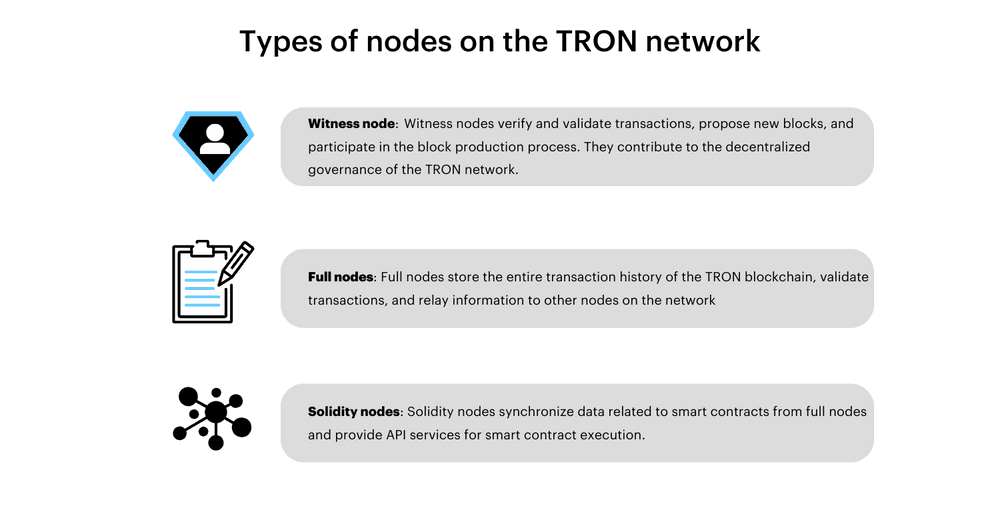
TRON relies on three node types:
- Super Nodes (Super Representatives): Create blocks, verify transactions, and maintain network security.
- Full Nodes: Store complete blockchain data, broadcast transactions, and provide APIs.
- Solidity Nodes: Synchronize finalized (solidified) block data and provide indexed API access.
Account-based Types
TRON uses three types of accounts:
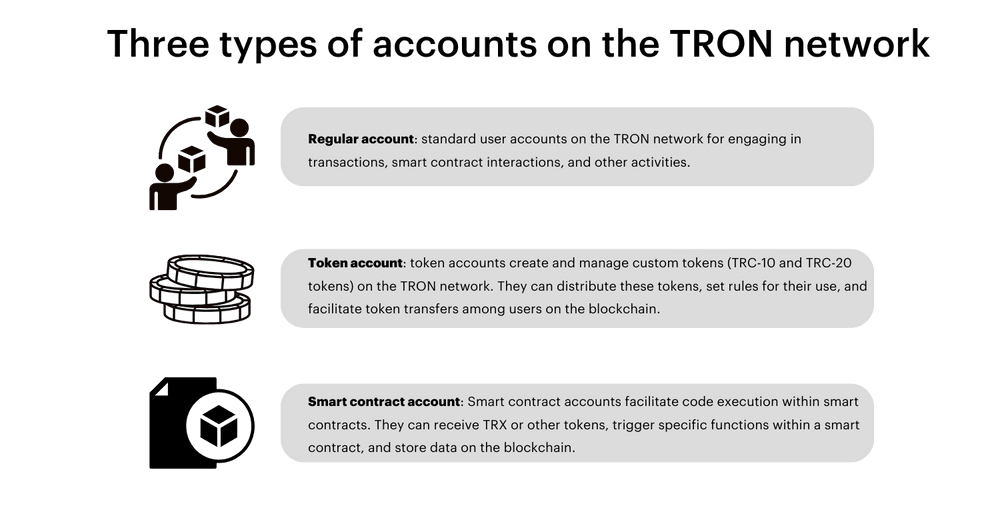
- Regular accounts for everyday users
- Token accounts to manage minted assets
- Contract accounts for deployed smart contracts
Who Founded TRON?
Justin Sun, an entrepreneur known for his early involvement in blockchain and his inclusion in Forbes Asia’s “30 Under 30,” founded TRON. Before TRON, Sun created the audio social app Peiwo and served as a representative for Ripple. His early network and traction helped attract support from investors such as Tang Binsen and Dai Wei.
What Is the TRON DAO?
TRON DAO is the decentralized organization responsible for the TRON ecosystem. Formerly the TRON Foundation, it rebranded in 2021 to reflect a more community-driven direction.
TRON DAO members (TRX holders) can:
- Vote on protocol upgrades
- Fund new projects
- Influence governance decisions
- Elect Super Representatives
The goal is to create a blockchain that is accessible, scalable, and driven by its users rather than a centralized foundation.
What Makes TRON Different?
TRON stands out in a few areas:
- Low Fees: Transactions cost as little as a fraction of a cent, often around $0.000005.
- High Throughput: The network can process roughly 2,000 transactions per second, far higher than early-generation blockchains like Bitcoin.
- Creator-focused ecosystem: Developers designed TRON to let creators distribute content without centralized platforms taking a cut.
- Staking and Voting: Holding TRX allows users to freeze tokens, gain voting power, and earn staking rewards.
- Strong presence in payments: Many services accept TRX, and stablecoins like USDT and USDC operate heavily on TRON due to its low fees.
TRON DAO Competitors
TRON competes with other networks focused on speed, scalability, and smart-contract functionality:
- Ethereum: The leading smart-contract platform using Proof-of-Stake
- Cardano: A PoS network built around formal research and high-assurance design
- VeChain: A supply-chain-focused blockchain for enterprise data and logistics
TRON (TRX) Token Overview
TRX is the native currency of the TRON blockchain. It powers:
- Transactions
- Smart contract execution
- Staking
- Governance voting
- Payments to content creators
TRX launched with a maximum supply of 100.85 billion tokens. Around 88.8 billion TRX are currently in circulation. TRON raised roughly $60 million during its ICO. Its all-time high was $0.131 in January 2018. Despite market cycles, TRON remains a top-10 cryptocurrency by market capitalization.
TRX Staking
Staking TRX gives you:
- Voting rights
- TRON Power (influence in governance)
- Staking rewards
Staking is available through various wallets and platforms.
Where to Buy TRX
You can buy TRX on major exchanges, including:
- Binance
- OKX
- Huobi
- Coinbase (availability varies by region)
You can also earn TRX by becoming a validator or delegating to Super Representatives.
Security Measures
TRON’s security relies on:
- Delegated Proof-of-Stake, which rotates validators every six hours
- A Bug Bounty Program that rewards community members for reporting vulnerabilities
These systems help keep the network resilient and up-to-date.
How People Use the TRON Network
TRON supports a wide range of use cases:
- Low-fee payments
- Gaming and gambling dApps
- Content publishing
- High-volume stablecoin transfers
- DeFi apps
- Digital collectibles
Companies like Travala, SpendCard, and Bitnovo accept TRON payments, and stablecoin adoption (USDT and USDC) is one of the network's most significant growth drivers.
Choosing a TRON Wallet
TRON is supported on many wallets. A secure option is Tangem Wallet, which lets you store, buy, sell, and exchange TRX directly through a self-custodial cold-storage card. It keeps your keys offline while providing easy, everyday access. Check out our Tron-branded Tangem Wallet.
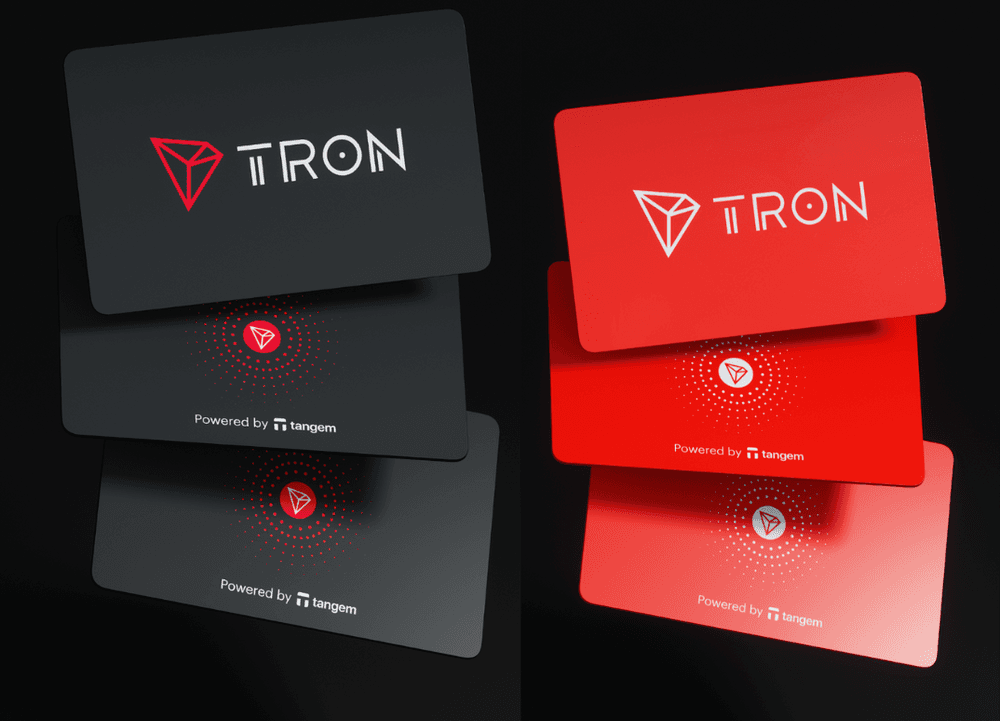
Is TRON a Good Investment?
TRON’s ecosystem is active, particularly in areas such as gaming, payments, and entertainment dApps. Low fees and the use of stablecoin have made it increasingly popular among users seeking alternatives to Ethereum. Like any crypto project, success depends on adoption, security, and long-term demand. TRON continues to grow, but investors should research and consider their risk tolerance before making a purchase.
FAQ: TRON, TRX, and TRON DAO
What is TRON (TRX)?
TRON is a blockchain designed to support a decentralized internet. Its native token, TRX, powers payments, transactions, and smart contracts across the network.
What is TRON used for?
Users rely on TRON for payments, dApps, gaming, content distribution, and low-cost transfers of stablecoins like USDT and USDC.
How does TRON's consensus mechanism work?
TRON uses Delegated Proof-of-Stake. TRX holders vote for Super Representatives who validate transactions and run the network.
What makes TRON different from other blockchains?
Its low fees, fast throughput, and intense focus on creator-driven applications set it apart. TRON also hosts one of the most active stablecoin ecosystems.
Is TRON scalable?
Yes. TRON’s architecture and DPoS system support high-speed transaction processing, making it suitable for both payments and dApps.
Where can I store TRX safely?
You can store TRX in hardware or software wallets. A secure option is Tangem Wallet, which gives you offline key storage and an easy interface for managing TRX.



